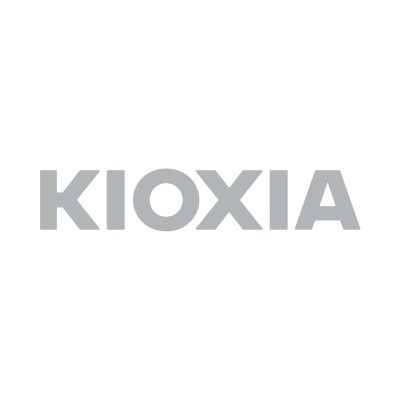Kioxia's IPO: A Test of Resilience in Japan's Chip Market
December 2, 2024, 4:41 pm
Kioxia Holdings Corp is on the brink of a significant transformation. The Bain Capital-backed chipmaker has set a tentative price range for its initial public offering (IPO) on the Tokyo Stock Exchange. The price is pegged between 1,390 and 1,520 yen, translating to approximately $9.22 to $10.09 per share. This marks a pivotal moment for Kioxia, which has faced its share of challenges and setbacks.
The upcoming IPO is not just a financial maneuver; it’s a litmus test for the broader landscape of Japan’s semiconductor industry. Kioxia’s market valuation is projected to hover between 749 billion and 819 billion yen. This valuation reflects the company’s journey from a troubled past to a hopeful future.
Kioxia’s path to this IPO has been anything but smooth. The company, previously part of Toshiba, was acquired by Bain Capital in 2018 for a staggering 2 trillion yen. This acquisition came on the heels of Toshiba’s scandals, which left the conglomerate in disarray. Bain’s purchase was a bold move, aiming to stabilize Kioxia and unlock its potential in the competitive chip market.
However, the road to going public has been fraught with obstacles. Just last October, Bain scrapped its IPO plans after investors demanded a market value of around 800 billion yen. This was a stark contrast to Bain’s ambitious target of 1.5 trillion yen. The decision to delay the IPO highlighted the challenges facing private equity firms in Japan, where the market is still adjusting to the dynamics of buyouts and public listings.
Now, as Kioxia prepares for its debut on December 18, the stakes are high. The semiconductor industry is capital-intensive, requiring significant investment for research and development. By going public, Kioxia aims to tap into new funding sources. However, this move also invites increased scrutiny of its financial health and operational strategies.
The timing of Kioxia’s IPO is crucial. The global semiconductor market is experiencing a renaissance, driven by demand for advanced technologies such as artificial intelligence, 5G, and the Internet of Things. Companies are racing to innovate, and Kioxia is no exception. It specializes in flash memory and storage solutions, which are integral to modern computing.
Yet, the competitive landscape is fierce. Major players like Samsung and Micron dominate the market, and Kioxia must carve out its niche. The IPO could provide the necessary capital to enhance its research capabilities and expand its product offerings. But it also means Kioxia must deliver results to satisfy shareholders.
Investors are keenly watching Kioxia’s journey. The IPO is seen as a bellwether for other buyout firms looking to take their portfolio companies public in Japan. The success or failure of Kioxia’s listing could influence future investment strategies in the region. If Kioxia thrives, it may encourage more private equity firms to pursue similar paths.
Moreover, Kioxia’s IPO comes at a time when Japan is witnessing a shift in corporate governance. Companies are increasingly selling non-core assets or opting for privatization. This trend reflects a broader reevaluation of business strategies in a rapidly changing economic environment. Kioxia’s public offering could signal a renewed confidence in Japan’s tech sector.
The potential for Kioxia is significant. With the right investments and strategic direction, it could emerge as a leader in the semiconductor space. The company’s focus on innovation and quality will be paramount. Investors will be looking for signs of growth and profitability in the coming quarters.
As Kioxia prepares for its IPO, the eyes of the financial world are upon it. The company stands at a crossroads, with the potential to redefine its future. The upcoming listing is not just about raising capital; it’s about establishing a legacy in a competitive industry.
In conclusion, Kioxia’s IPO is more than a financial event. It represents a critical juncture for the company and the Japanese semiconductor market. The outcome will resonate beyond the stock exchange, influencing investment trends and corporate strategies in the region. As Kioxia steps into the public arena, it carries the hopes of investors and the weight of its past. The journey ahead is uncertain, but the potential for success is palpable. The world will be watching closely as Kioxia embarks on this new chapter.
The upcoming IPO is not just a financial maneuver; it’s a litmus test for the broader landscape of Japan’s semiconductor industry. Kioxia’s market valuation is projected to hover between 749 billion and 819 billion yen. This valuation reflects the company’s journey from a troubled past to a hopeful future.
Kioxia’s path to this IPO has been anything but smooth. The company, previously part of Toshiba, was acquired by Bain Capital in 2018 for a staggering 2 trillion yen. This acquisition came on the heels of Toshiba’s scandals, which left the conglomerate in disarray. Bain’s purchase was a bold move, aiming to stabilize Kioxia and unlock its potential in the competitive chip market.
However, the road to going public has been fraught with obstacles. Just last October, Bain scrapped its IPO plans after investors demanded a market value of around 800 billion yen. This was a stark contrast to Bain’s ambitious target of 1.5 trillion yen. The decision to delay the IPO highlighted the challenges facing private equity firms in Japan, where the market is still adjusting to the dynamics of buyouts and public listings.
Now, as Kioxia prepares for its debut on December 18, the stakes are high. The semiconductor industry is capital-intensive, requiring significant investment for research and development. By going public, Kioxia aims to tap into new funding sources. However, this move also invites increased scrutiny of its financial health and operational strategies.
The timing of Kioxia’s IPO is crucial. The global semiconductor market is experiencing a renaissance, driven by demand for advanced technologies such as artificial intelligence, 5G, and the Internet of Things. Companies are racing to innovate, and Kioxia is no exception. It specializes in flash memory and storage solutions, which are integral to modern computing.
Yet, the competitive landscape is fierce. Major players like Samsung and Micron dominate the market, and Kioxia must carve out its niche. The IPO could provide the necessary capital to enhance its research capabilities and expand its product offerings. But it also means Kioxia must deliver results to satisfy shareholders.
Investors are keenly watching Kioxia’s journey. The IPO is seen as a bellwether for other buyout firms looking to take their portfolio companies public in Japan. The success or failure of Kioxia’s listing could influence future investment strategies in the region. If Kioxia thrives, it may encourage more private equity firms to pursue similar paths.
Moreover, Kioxia’s IPO comes at a time when Japan is witnessing a shift in corporate governance. Companies are increasingly selling non-core assets or opting for privatization. This trend reflects a broader reevaluation of business strategies in a rapidly changing economic environment. Kioxia’s public offering could signal a renewed confidence in Japan’s tech sector.
The potential for Kioxia is significant. With the right investments and strategic direction, it could emerge as a leader in the semiconductor space. The company’s focus on innovation and quality will be paramount. Investors will be looking for signs of growth and profitability in the coming quarters.
As Kioxia prepares for its IPO, the eyes of the financial world are upon it. The company stands at a crossroads, with the potential to redefine its future. The upcoming listing is not just about raising capital; it’s about establishing a legacy in a competitive industry.
In conclusion, Kioxia’s IPO is more than a financial event. It represents a critical juncture for the company and the Japanese semiconductor market. The outcome will resonate beyond the stock exchange, influencing investment trends and corporate strategies in the region. As Kioxia steps into the public arena, it carries the hopes of investors and the weight of its past. The journey ahead is uncertain, but the potential for success is palpable. The world will be watching closely as Kioxia embarks on this new chapter.

